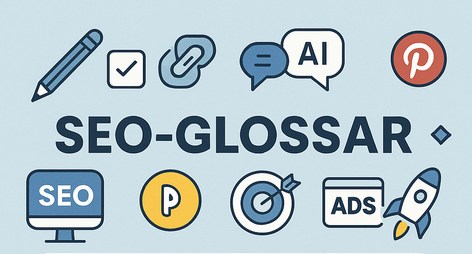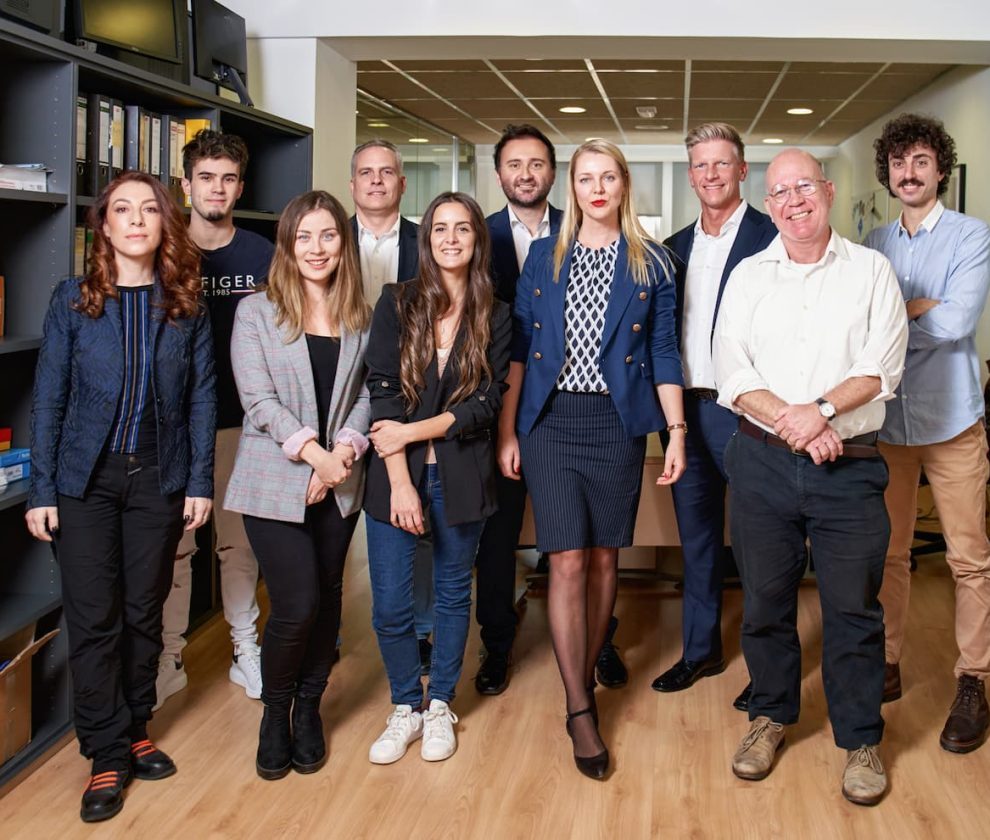404-Error – You get this error message when a page no longer exists.
ALT-Tag – The alternative text is a brief description of an image. It belongs to the meta information and is not visible to the user but is visible to Google.
AI-SEO – SEO with the help of artificial intelligence.
Amazon Ads – Paid advertising directly on Amazon platforms.
Amazon SEO – Optimizing product pages for Amazon search.
Anchor – Also called link text, is the clickable text of a hyperlink. It is specified separately from the target address, so only the anchor text appears in the content, without interrupting the reading flow.
Backlink – A link received from another website – like a digital recommendation.
Blog – An online journal that regularly creates content on specific or general topics for a reader community.
Blogpost – An article, a single page of a blog.
Bounce Rate – Shows how many visitors leave immediately without doing anything.
ChatGPT SEO – Optimizing content for Google and ChatGPT.
Conversion Rate – Measures how many visitors perform a desired action (e.g., making a purchase).
CTR (Click-Through-Rate) – Compares how many people click relative to the advertisement.
Customer Journey – The journey of a (potential) customer from the first contact to the purchase of a product or service.
Dofollow Link – A dofollow link allows Google to pass trust signals and link juice from the linking website to the linked target page.
Duplicate Content – Duplicate content should be avoided because Google considers it low-quality.
E-E-A-T (Experience, Expertise, Authoritativeness, Trustworthiness) – Showing that content comes from experienced, trustworthy experts.
External Link – A reference from one website to a page outside its own domain, which is seen as a “recommendation” by Google.
Footer – A section at the bottom of a website, separate from the main content, and the counterpart to the header at the top of the page. The footer often contains the copyright symbol and a link to the website’s imprint.
GA4 (Google Analytics 4) – This tool is used to analyze how visitors behave on the website.
GEO (Generative Engine Optimization) – Optimizing content so that AI systems can understand and recommend it.
Growth Hacking – Rapid growth through clever marketing methods.
GSC (Google Search Console) – This Google tool is used to check the visibility and errors of a website.
Homepage – The main page of a website, found under the main domain.
Impression – Counts how many times content is displayed in search results.
Indexing– Ensures that Google finds the page and includes it in the search index.
Internal Links – Hyperlinks within a website that link to different pages. The link juice of a website is passed to various subpages through internal links.
Keyword – A word people search for on Google.
Keyword Density – Also called keyword density, it indicates what percentage of the total text on the page is made up of a specific keyword.
Keyword Stuffing – If the keyword density exceeds 5% of the text, it is considered keyword stuffing.
Click– Measures how many times someone clicks on a search result or link.

SEO Glossary from L to Z
Linkbuilding – The process of acquiring good links from other websites.
Linkjuice – The term combines “Link” (connection) and “Juice” (value) and refers to all the properties transferred from one webpage to another through a link.
Paid link– Purchasing links to improve ranking – Google doesn’t approve of this.
Link exchange – Exchanging links with other websites – but be cautious, as Google looks at this critically.
Meta Ads – Advertising on Facebook, Instagram, and other platforms.
Nofollow Link – If a link is tagged with the attribute rel=”nofollow”, Google will not follow the link, and the strength of the linking website is not passed on.
Page (Webseite) – A single page within the (entire) website.
Penalty – You can be penalized by Google if you violate their guidelines.
Pinterest SEO – Optimizing pins for Pinterest’s search algorithm.
Ranking – Refers to the position a page holds on Google.
SEA (Search Engine Advertising) – Paying for ads on Google to gain quicker visibility.
SEM (Search Engine Marketing) – Combining SEO and SEA to gain more visitors through search engines.
SEO (Search Engine Optimization) – Optimizing a website to be found easily on Google.
SERPs – Short for Search Engine Results Page, the page of results shown by Google.
Website – The entire online presence of a company (or an individual).

